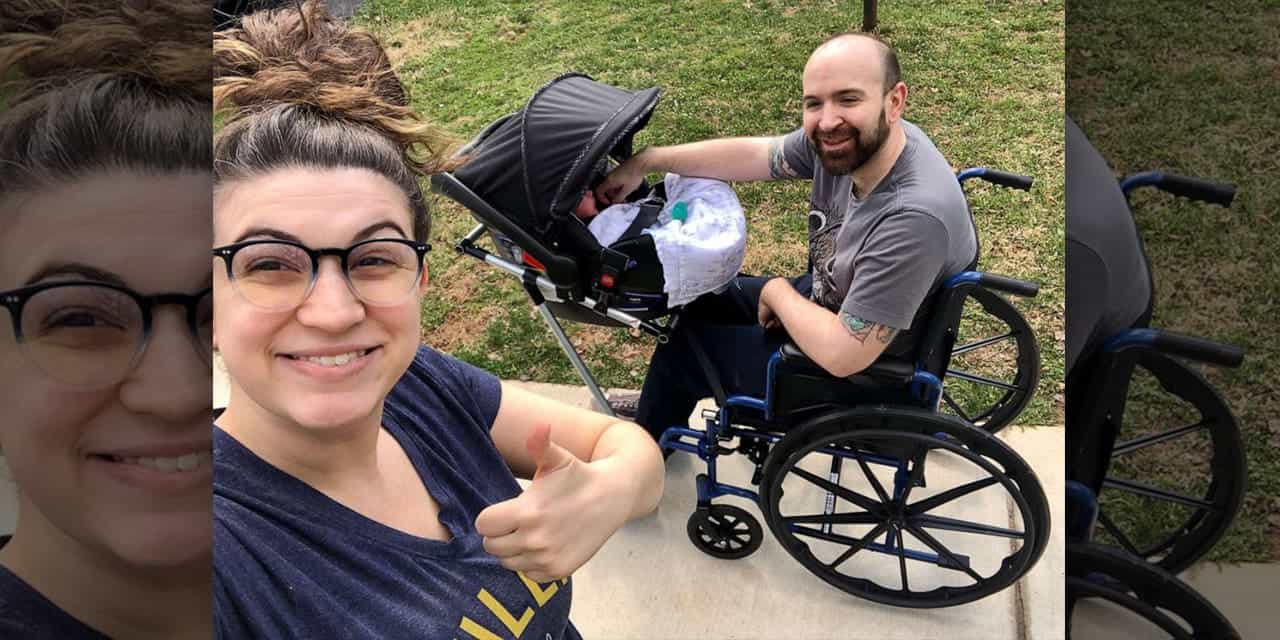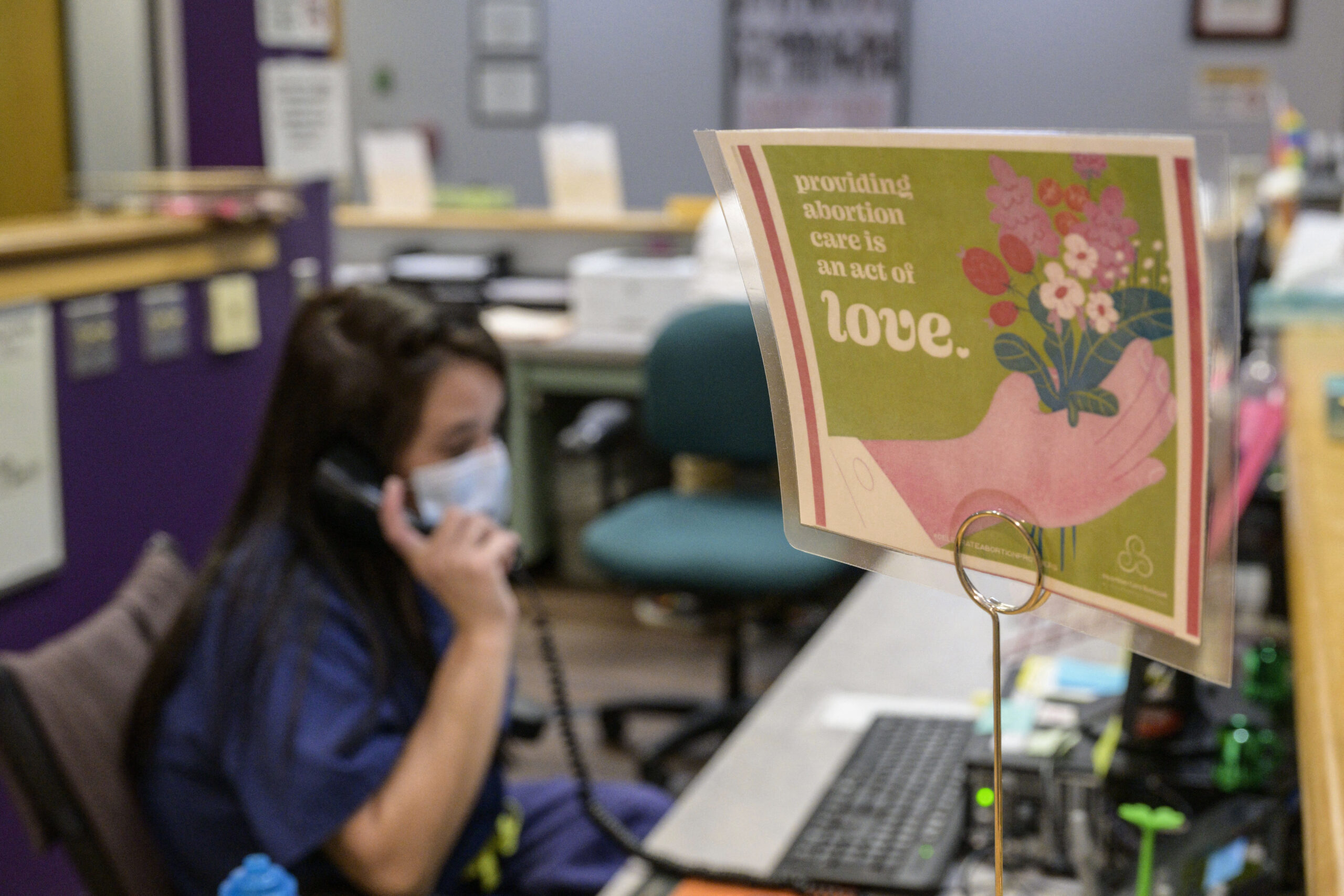High School Class Builds Baby Carrier that Attaches to Wheelchair So Father Can Take His Baby on Walks

An innovative high school class has created a baby carrier that can attach to a wheelchair so one teacher’s husband, who struggles to walk and usually uses a wheelchair, can enjoy the simple pleasure of taking his child out for a walk.
Jeremy King underwent brain surgery in 2017 to remove a tumor—reportedly the size of a baseball—from his brain. As a result, he has some speech and mobility issues.
“Even going out on a walk is so incredibly difficult for me,” King said in an interview with The Washington Post.
Having a child and being able to do normal things as a father seemed remote, but Jeremy and his wife Chelsie, a middle school teacher, were thrilled to discover that they were expecting their first child in June 2020.
However, the couple was concerned about how Jeremy could safely carry his child, specifically while walking, since he himself could barely do it.
“Getting outside and taking your baby for a walk in a stroller is something that a lot of people take for granted,” Chelsie said.
Unfortunately, there weren’t any options or products for those with wheelchairs.
As a middle school drama teacher, Chelsie had some connections and approached high school teacher Matt Zigler, “who runs the independent school’s ‘masterspace’—a creative lab where students are encouraged to participate in hands-on projects.”
Zigler proposed to the group of students that they take on the project and figure out how to transform a wheelchair into a part-time baby carrier. It was an interesting challenge, and one that the students wholeheartedly embraced.
“It seemed like that would be a perfect project that would engage the kids and result in a successful end product,” Zigler said. “They were all very excited about it.”
In addition to figuring out how to make the design work, the students also got a deeper understanding of what it’s like for those with disabilities.
“A big part of the course is developing empathy for the person you’re designing for,” Zigler said.
To begin the students got a wheelchair from the nurse’s office and “they started with low-tech experiments to see what might work, and then once those proved that they had some potential, they spent time refining them,” Zigler explained.
The students worked on two versions of the device, one that could hold an infant in a car seat and another that could help hold the child as he or she grew older.
They called the project “WheeStroll,” and in order to build the best project possible, the student team also interviewed the Kings, trying to figure out what type of terrain Jeremy would traverse with his son.
“It was really soul-touching talking to them because we really got to understand what they were thinking and their idea of what they wanted,” 15-year-old student Evan Beach said.
The students created a version that utilized components made by a 3-D printer and one with supplies from Home Depot totaling less than $100, making it easy to replicate for others in need.
Weeks after his birth, baby Phoenix went for a “walk” for the first time with his father in the attachment made for him by the team.
“These students gave me the opportunity to do something I thought I would never be able to do,” Jeremy said. “I’m really grateful.”
Photo by Chelsie King
ABOUT THE AUTHOR
Brittany Raymer serves as a policy analyst at Focus on the Family, researching and writing about abortion, assisted suicide, bioethics and a variety of other issues involving the sanctity of human life and broader social issues. She regularly contributes articles to The Daily Citizen and has written op-eds published in The Christian Post and The Washington Examiner. Previously, Raymer worked at Samaritan’s Purse in several roles involving research, social media and web content management. While there, she also contributed research for congressional testimonies and assisted with the Ebola crisis response. Raymer earned a bachelor of arts in history at Seattle Pacific University and completed a master’s degree in history at Liberty University in Virginia. She lives in Colorado Springs with her beloved Yorkie-Poo, Pippa.
Related Posts

Correcting the White House: God Became Man at Conception, Not Birth
December 10, 2025

The Telephone Used to Save Lives. Now It Takes Them.
December 9, 2025


